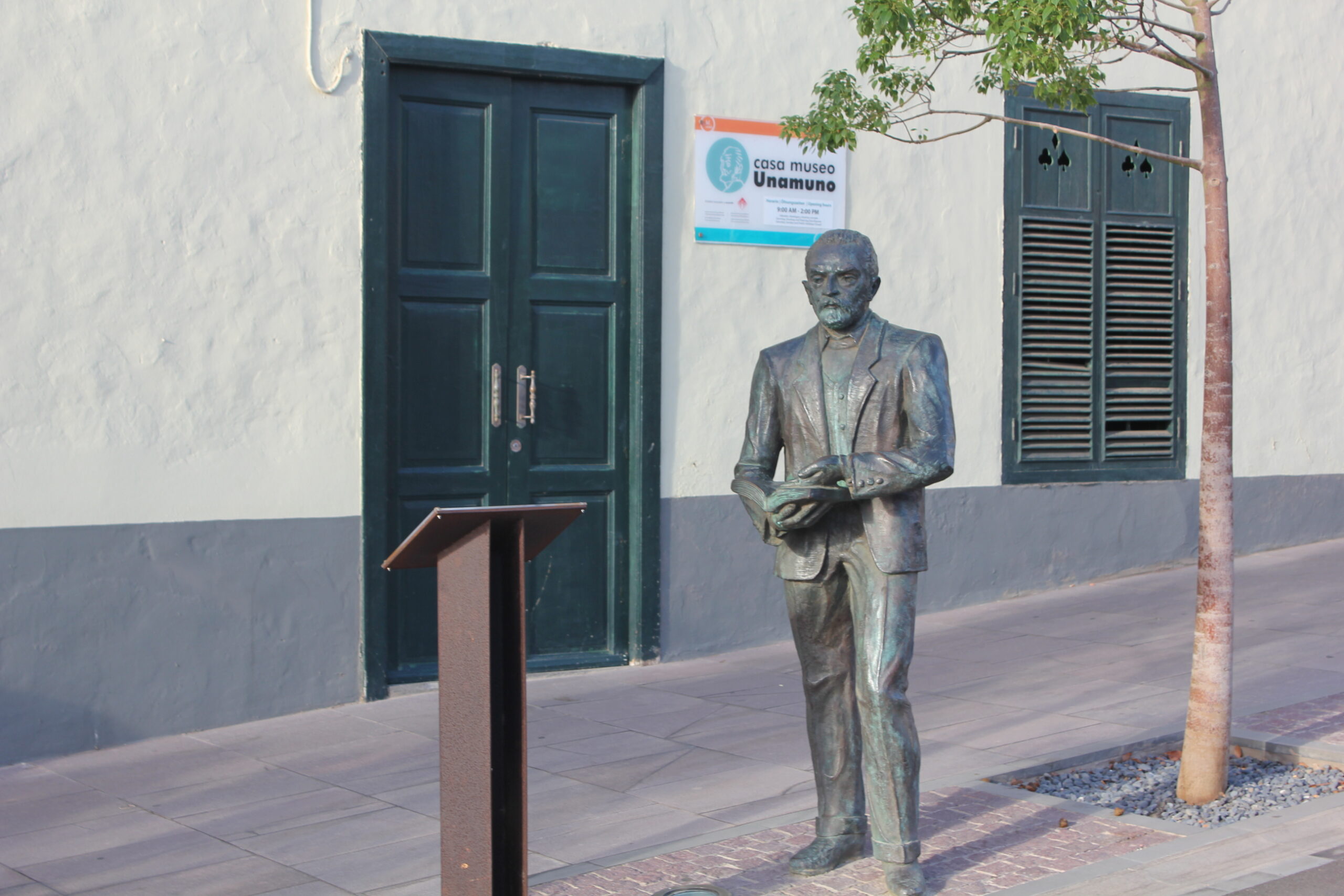We talk about people dumping waste, but the Canary Islands have been a dumping ground for people for centuries.. and thats why we love it!
An Article by Bernie Powers with The Voice Fuerteventura
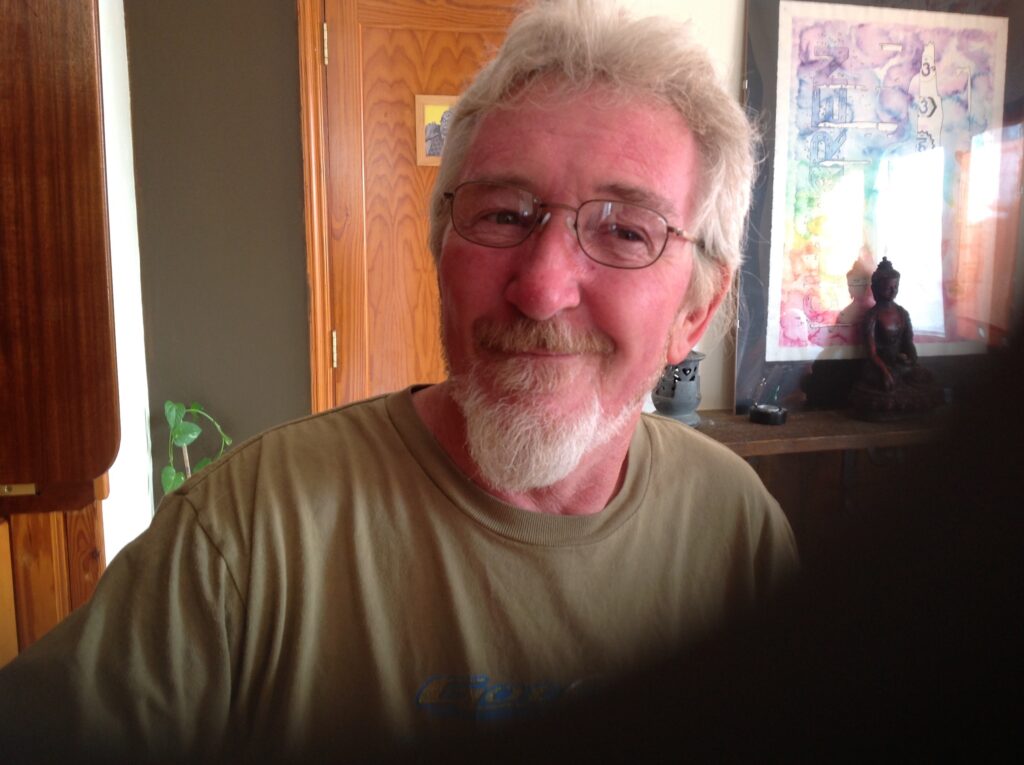
Since Roman times the Canary Islands have been used as a dumping ground for people who disagreed with the government and were subjected to banishment and exile, usually to a group of islands far away, as this was a good way to clear the decks of your opponents. The Canary Islands are a prime example of this.
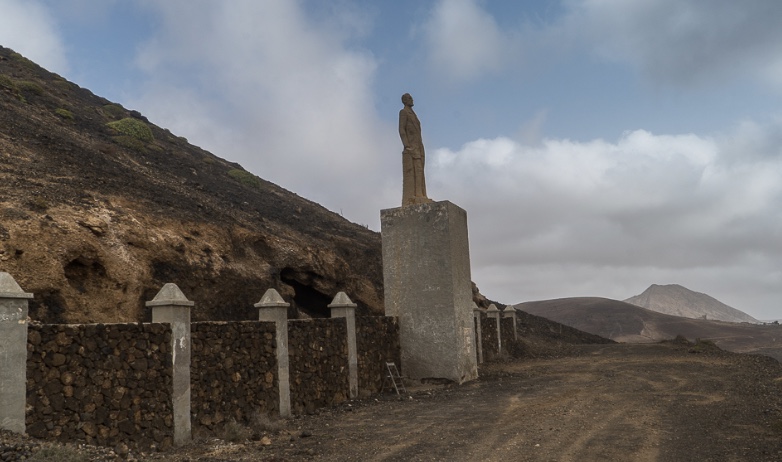
Miguel de Unamuno
We have evidence of this here on the island and there is a statue dedicated to a famous exile from the 1920’s located on the side of the mountain, as you head to Tetir. His name was Miguel Unamuno. He was a professor, poet, writer and Dean of Salamanca university. He was exiled here for 10 years and his house, ‘the old Fuerteventura hotel’ in Puerto Del Rosario, is now a museum in his memory. After 10 years he went back to the mainland and died in custody when he got there.
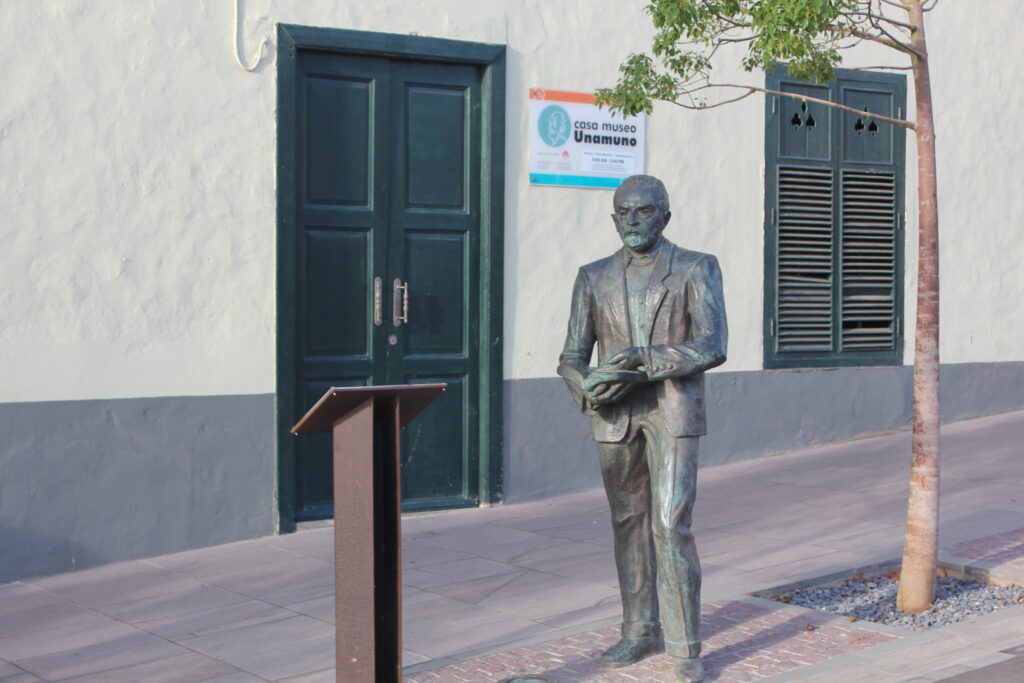
General Franco
In 1936, there was another outcast. A General, who was sent to Tenerife, as he was being a nuisance. His name was General Francisco Franco and his ‘deployment’ was a form of punishment for his rebellious actions against the Second Spanish Republic. He was the leader of the Spanish Foreign Legion based in Morocco and very powerful. He was the youngest General in Europe and he needed to get to his troops. However, he was constantly monitored. But, with the connivance of The British Government, a pilot was sent on a secret mission to fly him out of Tenerife unnoticed.
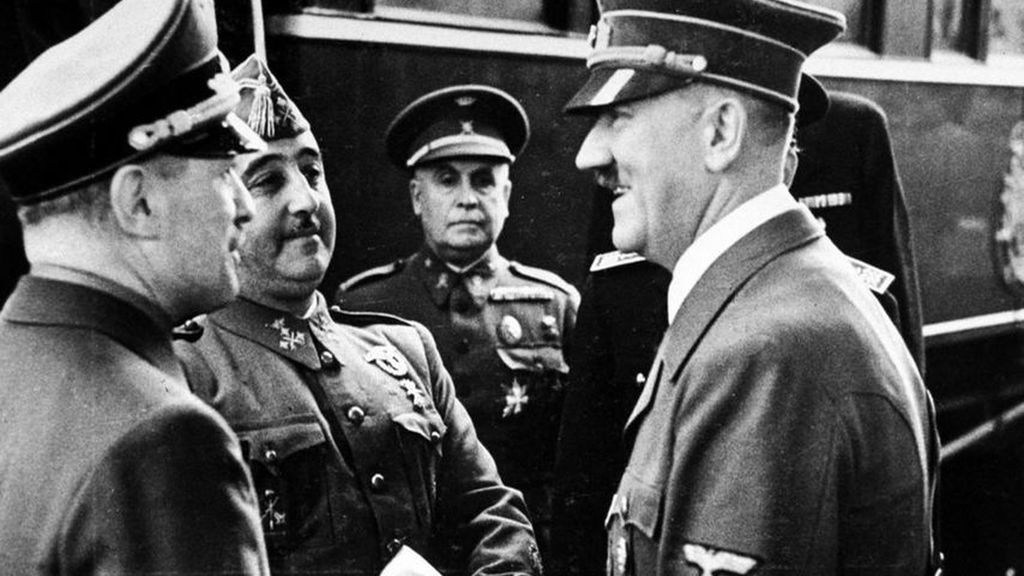
The Plan
The plan was to deliver Franco to his troops and he used the excuse of the funeral for a general, who had shot himself on a firing range, to leave the city and get to the airport. The pilot of the plane was Cecil Bebb and on the 11 July 1936, just after 7am, he climbed aboard his Havilland Dragon Rapide biplane and left Croydon airfield, headed for the Canaries and Morocco. Today, he is often referred to as ‘The Englishman who Inadvertently started the Spanish Civil War’ and in1939, was awarded a medal for his role in this mission. In 1970, he also received two more. He even gave his plane to Franco as a gift and it is on display in the Museum del Aire in Madrid, today.
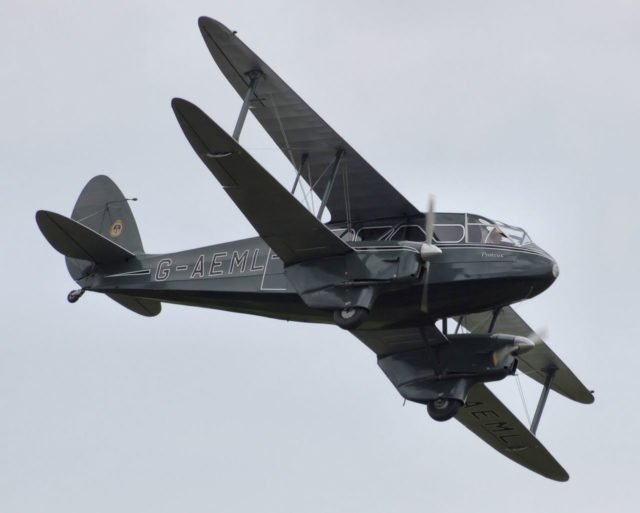
Civil War
Franco was a key figure in right-wing plots to mount a coup against the republican government in Madrid. On July 19, Franco landed inTetuan, Morroco and immediately began to assemble the Spanish troops and prepare them for the coup and, ultimately, civil war. Franco went on to fight the legal government with his army and one by one his generals died and he took control as dictator of Spain. From 18th July, 1936 to 1 April, 1939 he oversaw the deaths of more than 600,000 people. He was the soul ruler of Spain for 36 years until he died on Nov 20th, 1975, brutally putting down any free speech and, it is estimated, that he also executed 40,000 after the war. He even banned dancing, singing and the bikini.
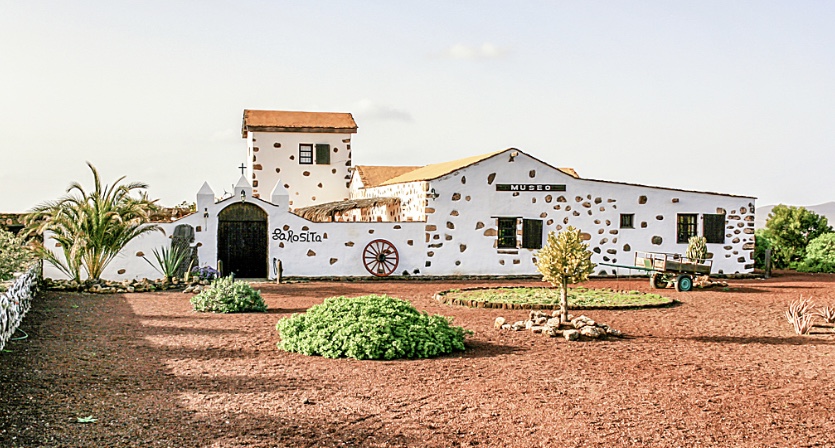
Economic Struggles
The country suffered economically and the Canary Islands especially. This was the last, really large emigration of islanders. Many went to Cuba, some even had to steal ships and ram them into the dock, as the authorities tried to resist them landing. Many of them were tobacco farmers whose cigars made the islands famous for many years. They went on to help make Cuba famous too. You can still see one of the old tobacco farms, Called La Rosita, near to the new housing development, on the road to Villaverde.
La Rosita is now a privately owned museum and entry will cost you just a few euros. Inside you will find lots of old agricultural equipment and information about the tobacco industry on the island, as well as a small farm / petting zoo where little ones can feed the goats and an area to buy local plants such as succulents and cacti.
Names and Reminders
The army had moved in, on many of the islands, and put down all dissent. And, as many islanders were finding obtaining sufficient food difficult enough, they left politics alone. However, all over, there were still signs of the regime; The Guardia Civil had been the military police and still had many emblems and most towns and villages had a main street named after Franco, such as in la Oliva where they had Avenida Generalissimo Francisco Franco, although they don´t use it now and it has been removed from the maps. However, his favourite General, Garcia Escamez does still have a street named after him, in Puerto Del Rosario.
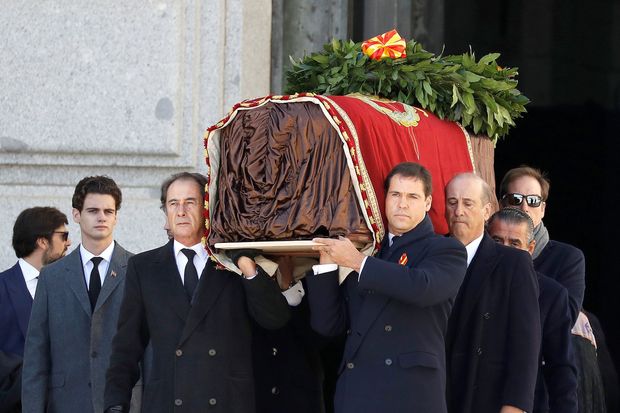
Without Honors
In 2007, a law was passed, called ‘The law of historic memory’ and all the names and emblems were to be destroyed, so as not to glorify the dictatorship. Slowly this is happening, although you can still see evidence of them around the island. In the last few weeks, in mainland Spain, Franco’s body was exhumed from the Valley of the Fallen Monument, in Madrid. The coffin was taken to a quiet church and laid next to his wife’s – without any honours.

